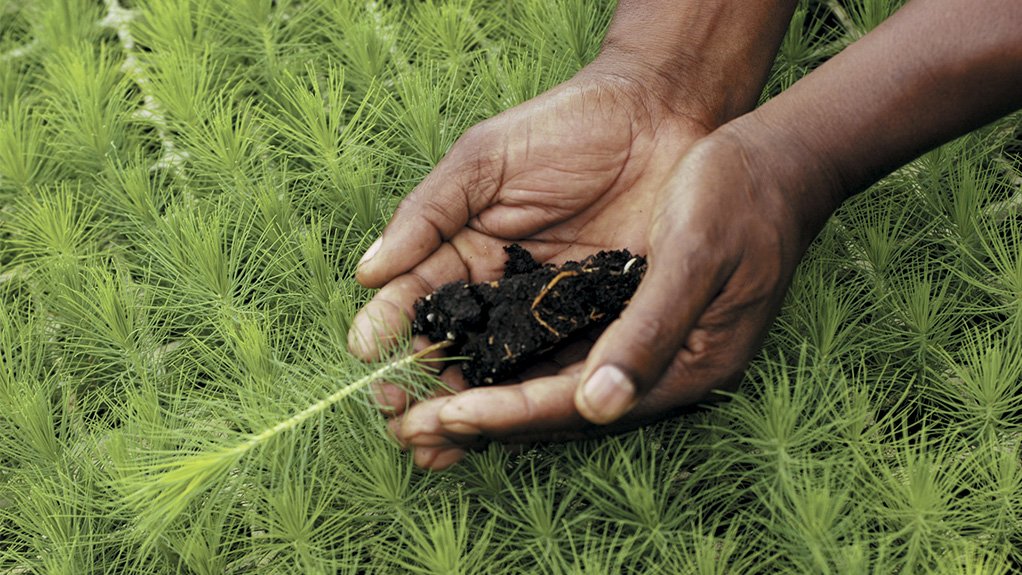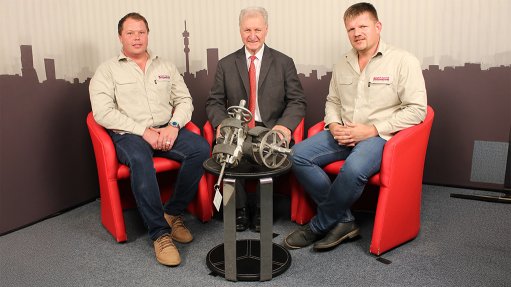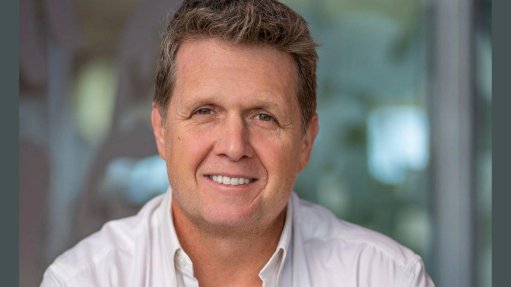Paper, wood products vital to lower carbon footprint


TREE PLANTING By growing more trees, quality of life can improve and make the world sustainable
Developed centuries ago, paper has a fascinating history as it has been through the mill – literally and figuratively – in terms of what it is made from, says paper and pulp industry association the Paper Manufacturers Association of South Africa (PAMSA).
It also has many interesting side stories such as the not well known story of paper storing carbon – which makes it good for the planet.
Even when planted trees are harvested for their wood – for paper, timber construction, packaging and tissue – the carbon remains locked up in the wood fibres and stays there for the lifecycle of those products. It is just one of the reasons paper recycling is important as it keeps the carbon locked up longer.
“To understand why paper and wood products are vital to a lower carbon footprint, we can borrow from Nobel Prize-winning physicist Richard Feynman’s assertion that trees don’t grow from the ground, they grow from the air,” says PAMSA executive director Jane Molony.
The photosynthesis process involves plants absorbing sunlight and carbon dioxide to make food. Trees take in carbon dioxide from the air, and water from the ground – which also came from the air at some point – and convert this into growth (trunks, roots and leaves). Oxygen is then returned to the atmosphere, meaning that this carbon cycle is why trees of all kinds are such a vital part of keeping our planet regulated, offsetting greenhouse-gas emissions and mitigating climate change, the association explains.
“In South Africa, trees can be divided into two groups – indigenous trees in natural forests and commercially and sustainably farmed trees in plantations. The latter were introduced some 100 years ago to protect natural forests, by providing farmed wood for productive purposes,” adds Molony.
Plantation trees are essentially crops that are planted and replanted in rotations, with only 9% of the total tree count being harvested in any given year. This means that there are always trees growing, at different stages of maturity, and these trees are contributing to the carbon cycle.
New Chapters for Wood
As the paper sector finds ways to diversify in the face of digitisation and reduced printing and writing paper demand, chemists and chemical engineers are increasingly discovering the “wonder of wood”.
Wood is made up of cellulose, hemicellulose, lignin, sugars and extracts. The properties of these elements make them suitable ingredients in countless, low-carbon products.
For example, dissolving wood pulp, a purified form of cellulose, is suitable for chemical conversion into a range of products – it is spun into viscose and lyocell textile fibres for use in fashion and decorating textiles, cast into a film or regenerated into a sponge.
It is extremely versatile as it can also bind active medicinal ingredients or vitamins into palatable tablets, stabilise emulsions or increase viscosity – which is why it is added to low-fat yoghurt and lipstick.
Nanocellulose – tiny cellulose nanofibres – can be used in food supplements and edible packaging, or even as a composite for screens on electronic devices.
Further, paper packaging manufacturers are exploring its use in weight reduction for paperboard without compromising strength and performance. The substance can also be applied as a recycling-friendly barrier coating instead of plastic.
By extracting more value from a tree, less goes to waste, Molony notes. “This opens the sector up to make even more meaningful contributions to sustainable product development and the circular economy.”
And by growing more trees and making innovative things from them, she concludes that the general quality of life can improve, which would make the world more sustainable.
Article Enquiry
Email Article
Save Article
Feedback
To advertise email advertising@creamermedia.co.za or click here
Comments
Press Office
Announcements
What's On
Subscribe to improve your user experience...
Option 1 (equivalent of R125 a month):
Receive a weekly copy of Creamer Media's Engineering News & Mining Weekly magazine
(print copy for those in South Africa and e-magazine for those outside of South Africa)
Receive daily email newsletters
Access to full search results
Access archive of magazine back copies
Access to Projects in Progress
Access to ONE Research Report of your choice in PDF format
Option 2 (equivalent of R375 a month):
All benefits from Option 1
PLUS
Access to Creamer Media's Research Channel Africa for ALL Research Reports, in PDF format, on various industrial and mining sectors
including Electricity; Water; Energy Transition; Hydrogen; Roads, Rail and Ports; Coal; Gold; Platinum; Battery Metals; etc.
Already a subscriber?
Forgotten your password?
Receive weekly copy of Creamer Media's Engineering News & Mining Weekly magazine (print copy for those in South Africa and e-magazine for those outside of South Africa)
➕
Recieve daily email newsletters
➕
Access to full search results
➕
Access archive of magazine back copies
➕
Access to Projects in Progress
➕
Access to ONE Research Report of your choice in PDF format
RESEARCH CHANNEL AFRICA
R4500 (equivalent of R375 a month)
SUBSCRIBEAll benefits from Option 1
➕
Access to Creamer Media's Research Channel Africa for ALL Research Reports on various industrial and mining sectors, in PDF format, including on:
Electricity
➕
Water
➕
Energy Transition
➕
Hydrogen
➕
Roads, Rail and Ports
➕
Coal
➕
Gold
➕
Platinum
➕
Battery Metals
➕
etc.
Receive all benefits from Option 1 or Option 2 delivered to numerous people at your company
➕
Multiple User names and Passwords for simultaneous log-ins
➕
Intranet integration access to all in your organisation



















